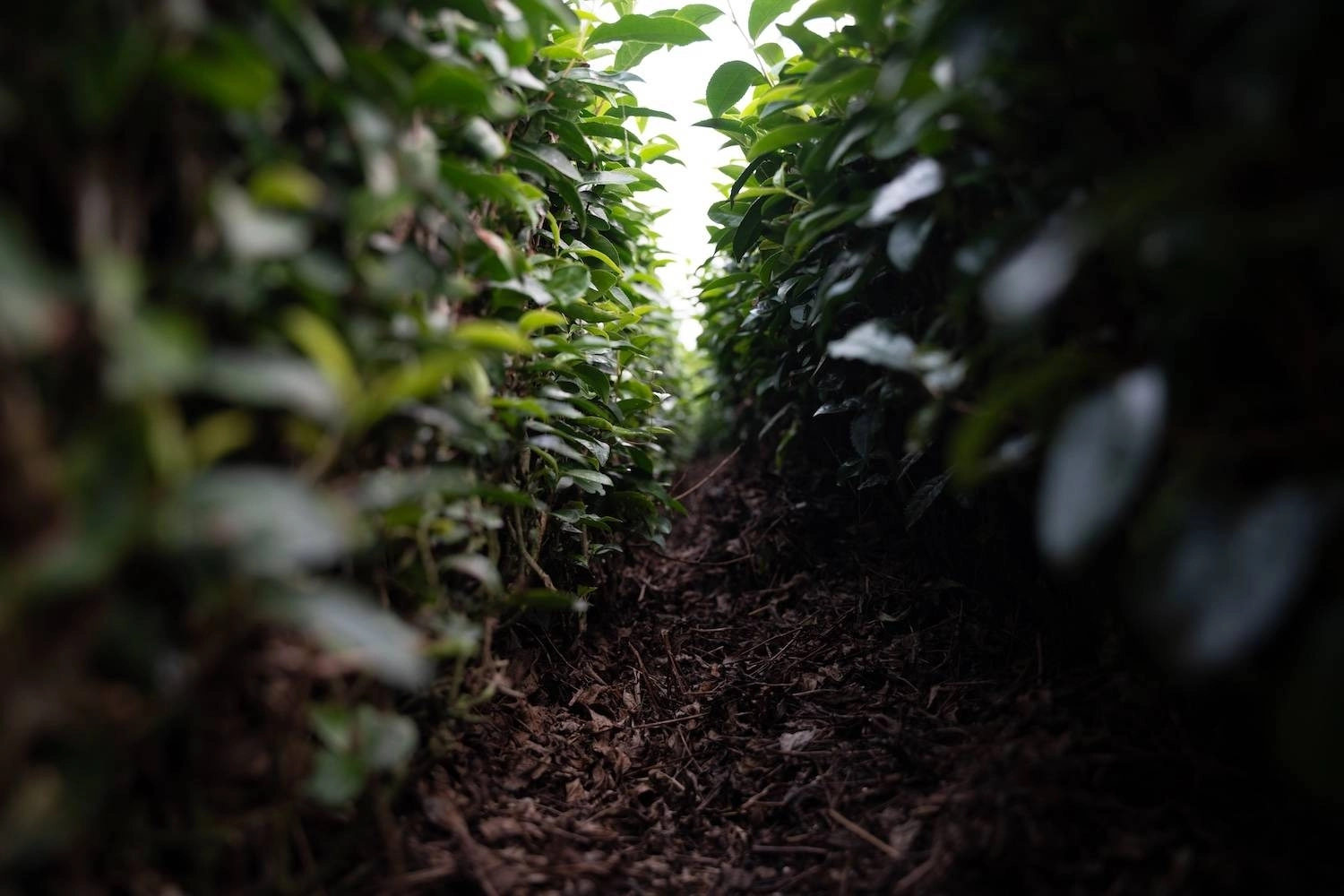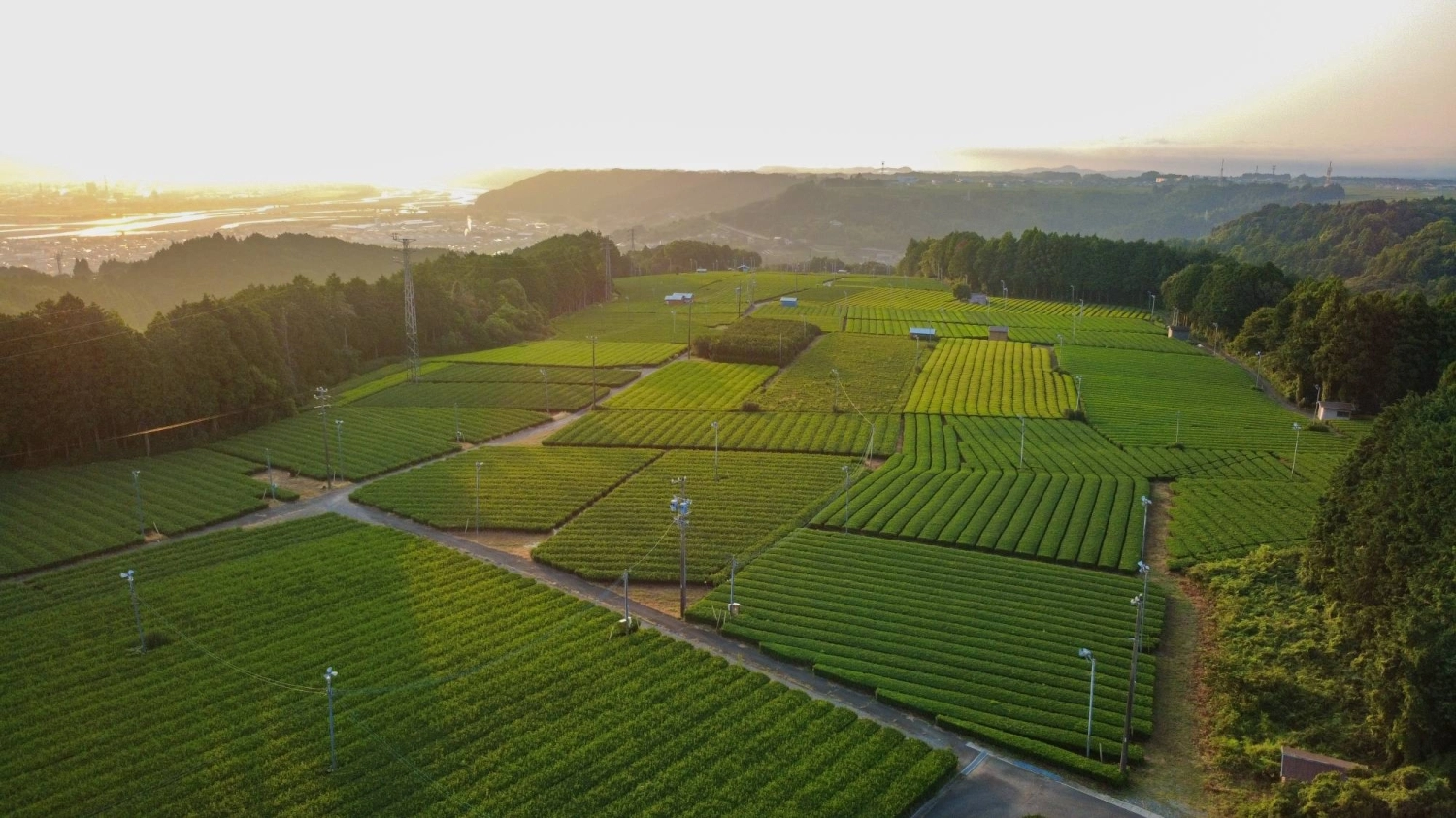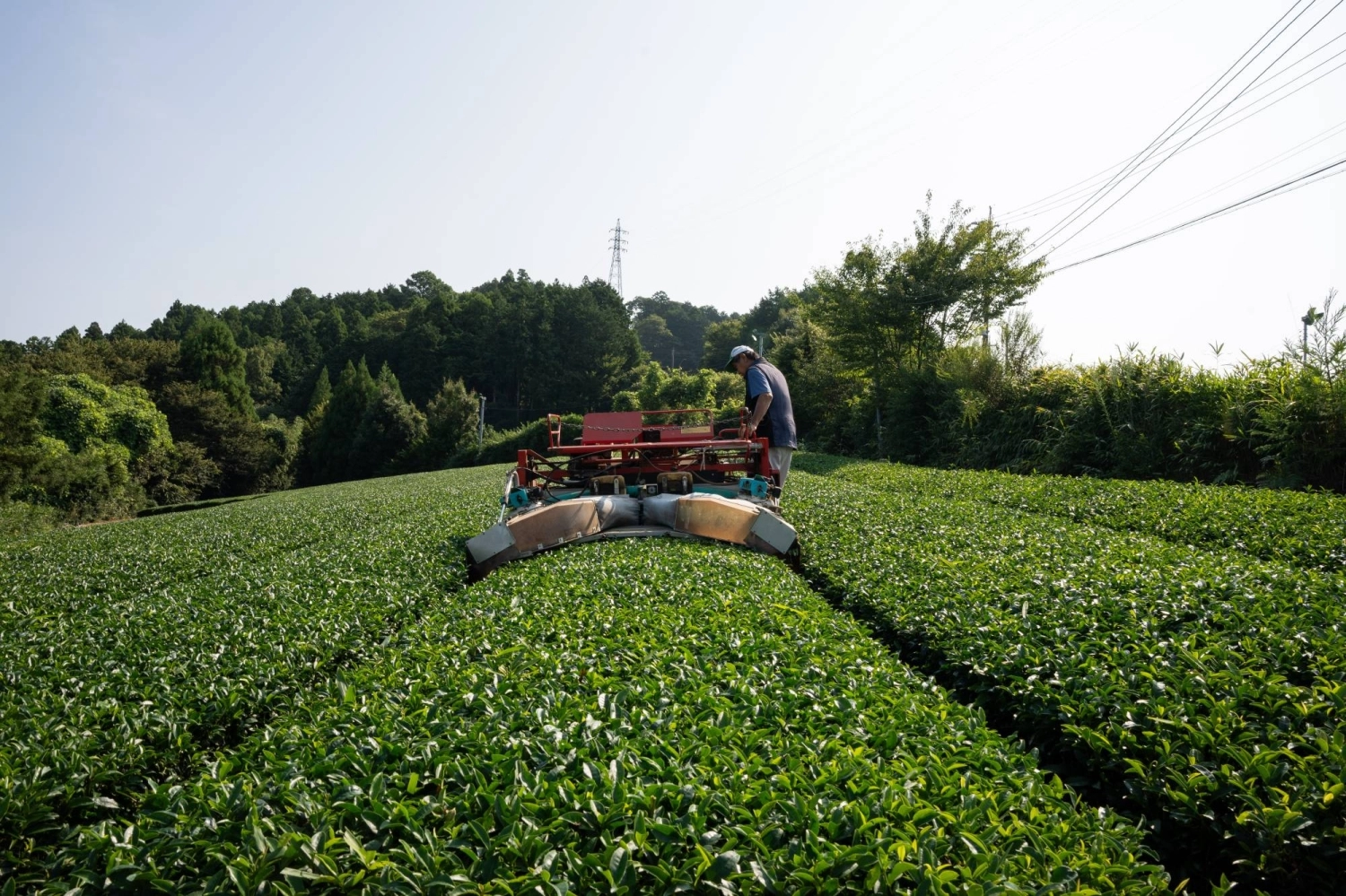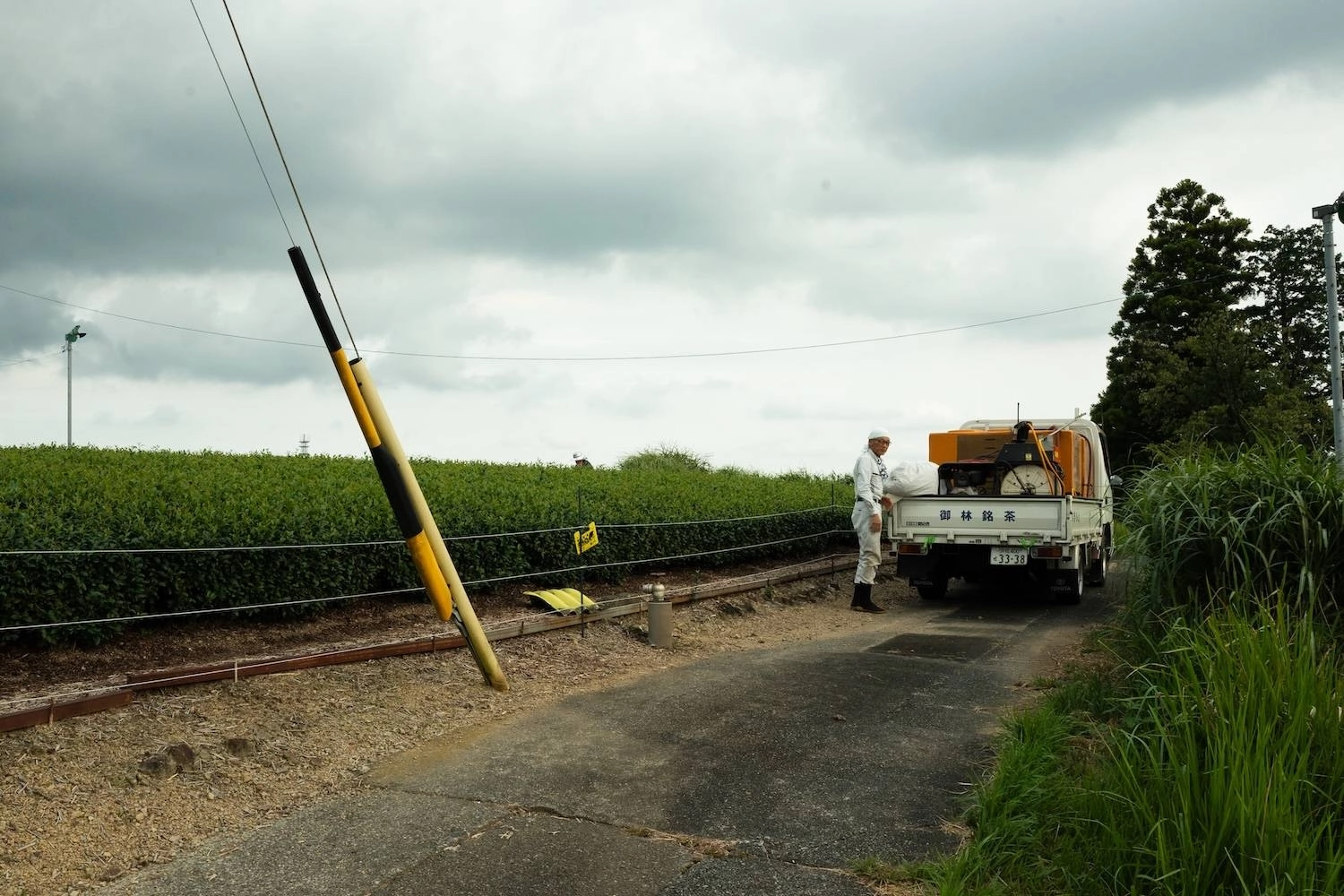Kazuhisa Sugimoto, a 75-year-old tea farmer overseeing a sprawling 18,000-square-meter tea farm in Kakegawa, Shizuoka Prefecture, is in a race against time.
Pressed by an aging generation, fickle consumer attitudes and the nature of the labor-intensive work, Sugimoto’s traditional way of tending to his tea bushes — known as the chagusaba method — is under threat.
“Chagusaba is a culmination of sustainable efforts throughout generations. The mulch that we lay down doesn’t last for a year, but compounds and benefits the latter generations,” Sugimoto says as he stands at the edge of his field on a hot summer day in early July.
Chagusaba (a word combining the kanji characters for “tea,” “grass” and “place”) is a semi-natural grassland deliberately left to grow so that it can later be cut down and used as mulch. It’s said that this mulch, which is spread on the ground between tea shrubs, makes tea taste better and is far more sustainable for the environment than conventional tea farming — yet it also takes more time and effort to produce. That said, Sugimoto states determinedly, “I know that when I tend my farm every day, I’m creating tea that’s better than anyone else’s.”
In recent years, the number of farmers who use this method has rapidly declined. As of August 2024, the number of confirmed chagusaba farmers had fallen to 302, just over half the 582 reported in 2015, according to the Shizuoka Chagusaba Farming Method Promotion Council.
“It’s a race against time,” Sugimoto says of the need to train more farmers.
These farmers all reside in five cities in Shizuoka, states the promotional council, a prefecture known for its strong passion for tea.
Chagusaba fields, at face value, are nothing more than a cluster of fields of silvergrass. “These could be weeds that grow around the house or the farm,” Sugimoto says.
The weeds and silvergrass are cut down each autumn and left to dry out. By winter, they’re processed and prepared into a mulch that is then spread between the rows of tea shrubs.
In 2013, it was recognized by the United Nations’ Food and Agriculture Organization (FAO) as a Globally Important Agricultural Heritage System (GIAHS) for its sustainability and its role in preserving over 300 endangered species of plants and insects, according to the promotional council. These sustainability characteristics were discovered by a botanist from the University of Shizuoka named Hidehiro Inagaki, who in 2011 was researching abandoned rice paddies when he stumbled upon a field of silvergrass and weeds.
“I wondered why a rice paddy (overgrown with weeds) was so rich in life,” he recalled. What Inagaki came across that day was an abandoned rice paddy used by tea farmers to grow chagusaba for their farms.
“By cutting the grass, the farmers create a brighter grassland, where biodiversity is rich,” says Inagaki, and it does so by allowing light to reach the ground, providing resources for other non-dominant species to grow. “Without proper maintenance, larger, more invasive species crowd the land, making it darker,” he said, preventing more delicate native species from growing. If repeated throughout seasons, the method influences change and creates a field with rich biodiversity.
Myriad benefits
This field of silvergrass is a subsystem of another concept called satoyama, which refers to the co-existence between humans and nature. These areas are places that have human-influenced agriculture and cultural landscapes.
Chagusaba, in particular, has been used for generations across Japan, and was traditionally how farmers would cultivate their crops. This method was used not only to nourish crops but also to feed cattle and horses, and as thatch for roofs. However, due to technological advancements in agri-business, farmers have gravitated toward pesticides and fertilizers that have progressively moved farmers away from older farming methods.

Chagusaba mulch from previous seasons is piled up in between rows of tea leaves at a farm in Kakegawa, Shizuoka Prefecture.
| KAI WILSON
But there are many aspects of chagusaba that are highly beneficial for crops and unattainable through modern methods of agriculture.
Most large-scale team farms in Japan now use heavy machinery to collect the tea leaves, compacting the ground below it, making it hard. The compacted ground tends to restrict root growth and decreases the amount of air and water that’s absorbed through the ground, says Inagaki. At the same time, it restricts the presence of microorganisms that break down organic material such as chagusa (tea grass) to generate fresh, healthy soil, hindering the growth of the plants.
On the other hand, while chagusaba farmers do use machinery, the accumulation of mulch tends to create a softer ground. In the cold winter months, this ground acts as a “blanket,” warming the tea shrubs while retaining moisture in the soil, Sugimoto says. This process prevents the surface of the soil from drying out, regulates the ground temperature, and reduces freeze-thaw cycles that can often damage the plant’s roots. The mulch also acts as a drainage system, improving the soil structure and avoiding waterlogging.
The mulch, however, doesn’t fully replace commercial agrochemicals.
“Historically, mulch was used as a natural fertilizer because that’s all they had,” Sugimoto says.
But now, the mulch alone isn’t enough to fertilize the ground and other types of fertilizer and additives are spread across fields in amounts that vary from farmer to farmer. According to a paper by the FAO, the mulch prevents the run-off of this material, absorbing it more efficiently, while also preventing weeds from growing. Because of this, it’s more sustainable and environmentally friendly.
Mulch itself also facilitates a fertile ecosystem for microorganisms that break down the organic matter in the ground, over time making the soil turn into humus, says Sugimoto — a dark form of organic matter made through decomposing plants and animals. The humus enriches the soil, making it more fertile.

The chagusaba process is inefficient and time-consuming and, despite all its benefits, farmers are turning to other methods for tea cultivation.
| KAI WILSON
Although Inagaki notes that “it has yet to be proven chemically that this method actually improves the quality of tea,” because of its characteristics and the richness of the soil, it’s been widely accepted that chagusaba tea tastes better.
Chagusaba was recognized by GIAHS members not just because of the rich biodiversity it creates but because of the method’s tendency to progressively become more sustainable as the farmers continue the cultivation process.
“Widespread agriculture becomes less sustainable the more we continue to harvest; however, the more tea is made using this method, the richer biodiversity gets,” says Inagaki.
Labor-intensive process
So why is this method dying out?
Despite all its benefits, the process is simply inefficient and time-consuming — nowadays, most green tea farmers tend to their crops throughout the months of January to September, and with the remaining months, they’re able to focus on growing and cultivating other vegetation, such as cabbage, making for a more diverse operation and adding to their bottom line.

Chagusaba was recognized by GIAHS members not just because of the rich biodiversity it creates but because of the method’s tendency to progressively become more sustainable as the farmers continue the cultivation process.
| KAI WILSON
In comparison, chagusaba farmers tend to their farms throughout the year without a break — it’s estimated that around 60% of their labor hours are dedicated to the cutting and drying of the mulch. On top of this, chagusaba isn’t an essential process in agriculture.
“It’s like a supplement, you don’t need to have it and you can produce without it,” Sugimoto says.
And in an era where efficiency reigns, the chagusaba method has dropped out of most farmers’ repertoire.
But there’s another reason why it’s not popular among farmers, and that’s attributed to a peculiar shift in the preferences of Japanese consumers.
“Previously, there used to be a price disparity between higher-quality tea and lower-quality ones, but we began to see a shift where consumers have wanted cheaper tea,” says Inagaki. This pushed down the prices of higher-quality tea and discouraged farmers from producing such crops.
But most farmers in Kakegawa don’t quit because of financial issues — they simply retire.
Not unlike the broader industry, the biggest issue the agricultural practice faces now is the rapidly aging generation of farmers. “I just can’t keep farming forever,” Sugimoto says.

Kazuhisa Sugimoto heads toward his truck at the end of a work day.
| KAI WILSON
It’s a pressing matter, and although it was hoped that the GIAHS status would bring an increase in demand from consumers for the chagusaba tea, that hasn’t materialized.
Indeed, it has proven to be difficult to find people to carry on the tradition.
“There just aren’t successors to carry on the method,” says Sugimoto, whose two sons work as salarymen.
“The number of farmers and the size of the crops may subside, but I believe that it’ll continue modestly,” he says as he stands among a vast field of tea shrubs.
Then he returns to fertilizing his field — alone.
www.japantimes.co.jp (Article Sourced Website)
#Shizuoka #farmers #fight #preserve #sustainable #tea #method #steeped #tradition
